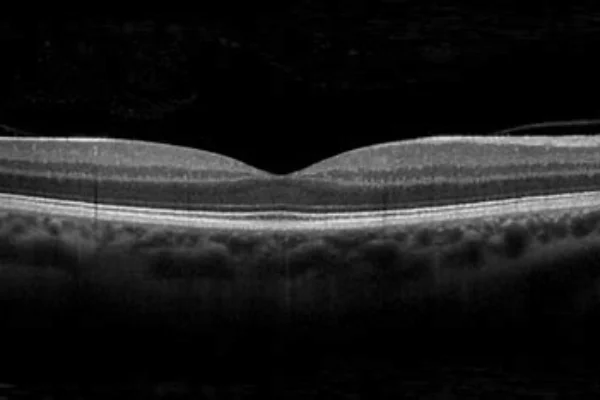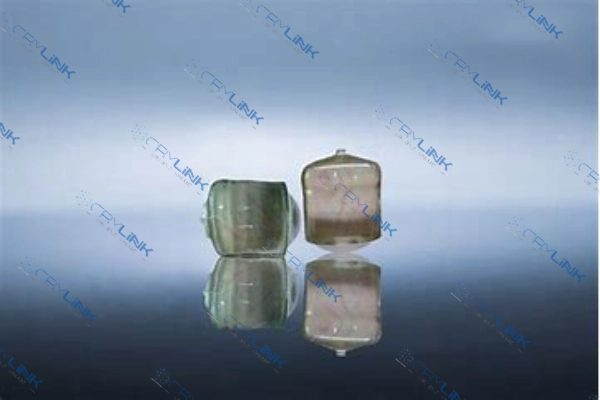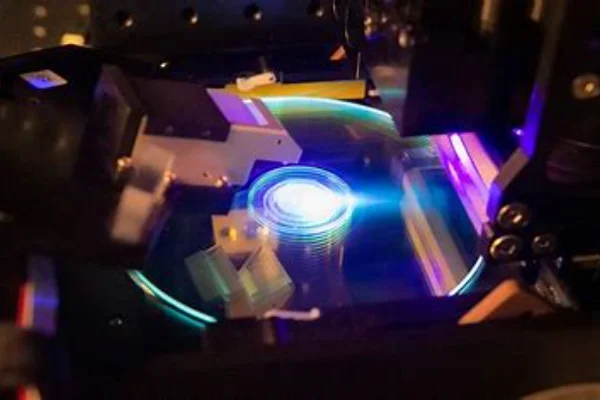Introduction
The realm of photonics has witnessed significant advancements, primarily driven by nonlinear optical crystals such as Potassium Dihydrogen Phosphate (KDP), Ammonium Dihydrogen Phosphate (ADP), and Lithium Niobate (LiNbO3). These crystals, distinguished by their capacity to modulate light’s frequency, intensity, and trajectory, are integral to numerous contemporary applications. This article delves into their intrinsic properties, applications, and the underlying science of their nonlinearity.
KDP Crystals: Harnessing Exceptional Nonlinear Properties
KDP crystals, renowned for their nonlinear optical attributes and vast angular bandwidth, are pivotal in harmonic generation, optical parametric oscillation, and electro-optical modulation. Their remarkable thermal stability, combined with mechanical robustness and resistance to environmental factors, positions them as invaluable assets in sectors ranging from aerospace to advanced medical instrumentation.

Applications of KDP CrystalsKDP
Beyond their known properties, KDP crystals are instrumental in terahertz wave generation and detection, courtesy of their potent electro-optic coefficients. Their significance is evident in advanced telecommunication systems, especially in optical fiber communication and waveguide devices. In the medical arena, KDP’s role in Optical Coherence Tomography (OCT) has revolutionized diagnostics, particularly in ophthalmology. Additionally, their incorporation in pulsed and continuous wave lasers has enhanced surgical precision in various medical fields.

ADP Crystals: A Deep Dive into Their Remarkable Attributes
Ammonium Dihydrogen Phosphate (ADP) crystals, with their unique nonlinear optical properties, have carved a niche for themselves in the realm of advanced photonics. Their intrinsic attributes, combined with their adaptability, make them indispensable in a myriad of optical applications.
Nonlinear Optical Excellence
- High Nonlinear Coefficients: One of ADP’s standout features is its high nonlinear coefficient. This property ensures that ADP crystals can efficiently convert light frequencies, making them ideal for various optical processes.
- Extensive Phase-Matching Range: ADP’s broad phase-matching range ensures that it can accommodate a wide spectrum of light wavelengths. This versatility allows ADP to be integrated into diverse optical systems, from high-power lasers to intricate modulators.
Electro-Optic Capabilities
- Large Electro-Optic Coefficients: ADP’s impressive electro-optic coefficients make it a preferred choice for applications that require rapid modulation of light, such as Pockels cells, optical switches, and Q-switches.
- Thermal Stability: In high-power laser applications, maintaining performance under varying temperature conditions is crucial. ADP’s commendable temperature bandwidth ensures that its properties remain consistent, even under fluctuating thermal conditions.

Applications in Modern Photonics
- Frequency Conversion: Given its high nonlinear coefficient and broad phase-matching range, ADP is a top contender for frequency conversion processes, enabling the generation of new light frequencies.
- Electro-Optic Modulation: ADP’s large electro-optic coefficients make it ideal for modulating light properties in real-time, a critical feature in advanced communication systems and laser technologies.
- High-Power Laser Systems: ADP’s resilience and thermal stability make it a reliable choice for high-power laser systems, ensuring consistent performance and reduced susceptibility to environmental factors.
LiNbO3 Crystals: Pioneering the Future of Advanced Photonics
Lithium Niobate (LiNbO3) crystals stand as a testament to the transformative power of nonlinear optics. With a unique combination of properties, these crystals have become a cornerstone in a plethora of advanced optical applications, driving innovations and setting new benchmarks in photonics.
Inherent Nonlinear Optical Properties
- Potent Nonlinearity: LiNbO3 is renowned for its strong nonlinearity, making it a preferred choice for frequency conversion processes, including second harmonic generation and parametric down-conversion.
- Broad Phase-Matching Capabilities: With an extensive phase-matching range, LiNbO3 can accommodate a diverse spectrum of light wavelengths, ensuring optimal interaction and conversion efficiency in various optical systems.
Electro-Optic and Acousto-Optic Attributes
- Electro-Optic Modulation: LiNbO3‘s impressive electro-optic coefficients have paved the way for its integration into high-speed modulators, essential in modern telecommunication systems.
- Acousto-Optic Interactions: The crystal’s ability to interact with both light and sound waves has led to its use in acousto-optic devices, enabling functions like light deflection and modulation through sound waves.

Diverse Applications in Photonics
- Waveguide Substrates: Given its refractive index properties and ability to support guided wave propagation, LiNbO3 has become a material of choice for optical waveguide substrates.
- Photorefractive Effect: LiNbO3‘s strong photorefractive effect has opened doors to innovations in holographic data storage, adaptive optics, and dynamic holography, offering solutions that are both efficient and compact.
- Electro-Optic Modulators: In the realm of telecommunications, LiNbO3‘s role in electro-optic modulators has been transformative, enabling rapid modulation of light signals for efficient data transmission.
The Science of Nonlinearity
Central to the properties of KDP, ADP, and LiNbO3 crystals is the phenomenon of optical nonlinearity. This involves the modification of light properties as it traverses through a medium, influenced by the light’s intensity. These nonlinear optical crystals exploit this effect to manipulate light in transformative ways, enabling applications like frequency conversion, optical switching, and more. The distinct nonlinearities exhibited by these crystals contribute to their unique applications and characteristics.

The Promising Horizon for Nonlinear Optical Crystals
As the field of photonics continues to evolve, the demand for efficient nonlinear optical crystals like KDP, ADP, and LiNbO3 is set to surge. Current research endeavors aim to enhance the properties of these crystals and discover new ones with superior or specialized performance attributes. In this dynamic landscape of nonlinear optics, the future promises groundbreaking innovations.
The future of nonlinear optical crystals is radiant with potential. As photonics continues its rapid evolution, these crystals are poised to be at the forefront of groundbreaking innovations. Their unique properties, from frequency conversion to electro-optic modulation, are driving advancements in sectors ranging from telecommunications to medical diagnostics. Research endeavors are constantly pushing the boundaries, exploring enhanced properties and discovering novel crystals with superior performance attributes. With the integration of advanced fabrication techniques and nanotechnology, the next wave of optical innovations powered by these crystals is on the horizon. Their vast potential signifies a bright future, heralding a new era of optical excellence.
Conclusion
The unparalleled properties and diverse applications of KDP, ADP, and LiNbO3 crystals underscore their significance in today’s technologically advanced world. From powering high-end laser systems to facilitating cutting-edge communication networks, these crystals form the bedrock of numerous optical applications integral to our daily lives. As we progress further into the photonics era, their potential is boundless, and their journey is only just beginning. Their vast potential and the exciting future ahead make the exploration of these crystals a captivating endeavor in the world of advanced photonics.
FAQs
- What are nonlinear optical crystals, and why are they significant in photonics?
Nonlinear optical crystals are specialized crystals that can modulate light’s frequency, intensity, and trajectory. They play a pivotal role in numerous contemporary applications, driving innovations in fields like telecommunications, medical diagnostics, and advanced laser technologies. - How do KDP and ADP crystals differ in their nonlinear optical properties?
KDP crystals are known for their vast angular bandwidth and thermal stability, making them ideal for harmonic generation and electro-optical modulation. In contrast, ADP crystals boast high nonlinear coefficients and an extensive phase-matching range, making them suitable for frequency conversion processes and electro-optic modulation in devices like Pockels cells and optical switches. - What makes LiNbO3 crystals unique in the realm of photonics?
Lithium Niobate (LiNbO3) crystals are renowned for their strong nonlinearity, broad phase-matching capabilities, and impressive electro-optic coefficients. Their diverse properties have led to their integration into various applications, including waveguide substrates, holographic data storage, and high-speed modulators in telecommunications. - How are nonlinear optical crystals shaping the future of advanced photonics?
Nonlinear optical crystals are driving innovations in advanced photonics by enabling frequency conversion, electro-optic modulation, and other transformative optical processes. Their unique properties are paving the way for advancements in communication systems, optical storage solutions, and high-power laser applications. - What research developments can we anticipate in the field of nonlinear optical crystals?
Ongoing research is focused on enhancing the properties of existing nonlinear optical crystals and discovering new ones with superior or specialized performance attributes. With the integration of advanced fabrication techniques and nanotechnology, the potential applications and impact of these crystals are set to expand, leading to a new wave of optical innovations.







